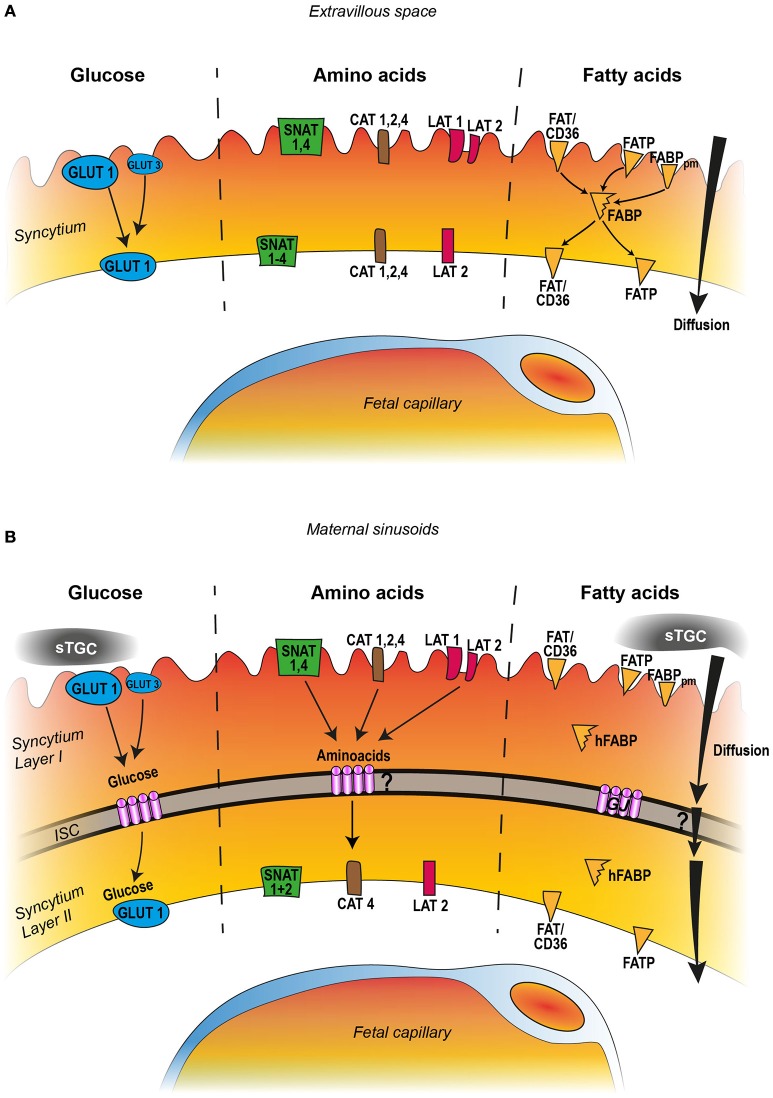Figure 1.
Comparison of human (A) and rodent (B) nutrient transport across the placental barrier, featuring the syncytial trophoblast layer. The transporter categories are manifold and only the most important and well documented transporters are indicated in the figures which include GLUT1, GLUT3, for glucose; SNAT1-4, CAT1, 2, 4, and LAT1,−2 for amino acid transport; for fatty acids FAT/CD36, FATP, and the fatty binding proteins FABPpm and FABP. The human placenta barrier consists of one syncytial trophoblast layer. The key molecules glucose, amino acids, and fatty acids are taken up from the maternal blood (extravillous space) by specific transporter systems and are released at the basal cell membrane into the fetal compartment. Glucose transport occurs toward the concentration gradient whereas amino acid transfer is an active process against the concentration gradient. Fatty acids may diffuse along the concentration gradient but in addition are taken up by a transporter system and translocated to the plasma membranes with help of the fatty acid binding protein (FABP). The rodent placental barrier of the labyrinth demonstrates three trophoblast layers: sinusoidal trophoblast giant cells (sTGS), which constitute no barrier function for nutrient transport, and two syncytiotrophoblast layers, layer I and layer II, separated by an intercellular space (ISC). The ISC is tightly bridged by numerous gap junction channels (GJ). Similar to the human situation glucose, amino acids, and fatty acids are taken up from the maternal sinusoids and translocated to the basal membrane of layer II with the help of a similar transporter system. Except from glucose which crosses the space through gap junction channels, it remains elusive how the other nutrients can cross the intercellular space.

